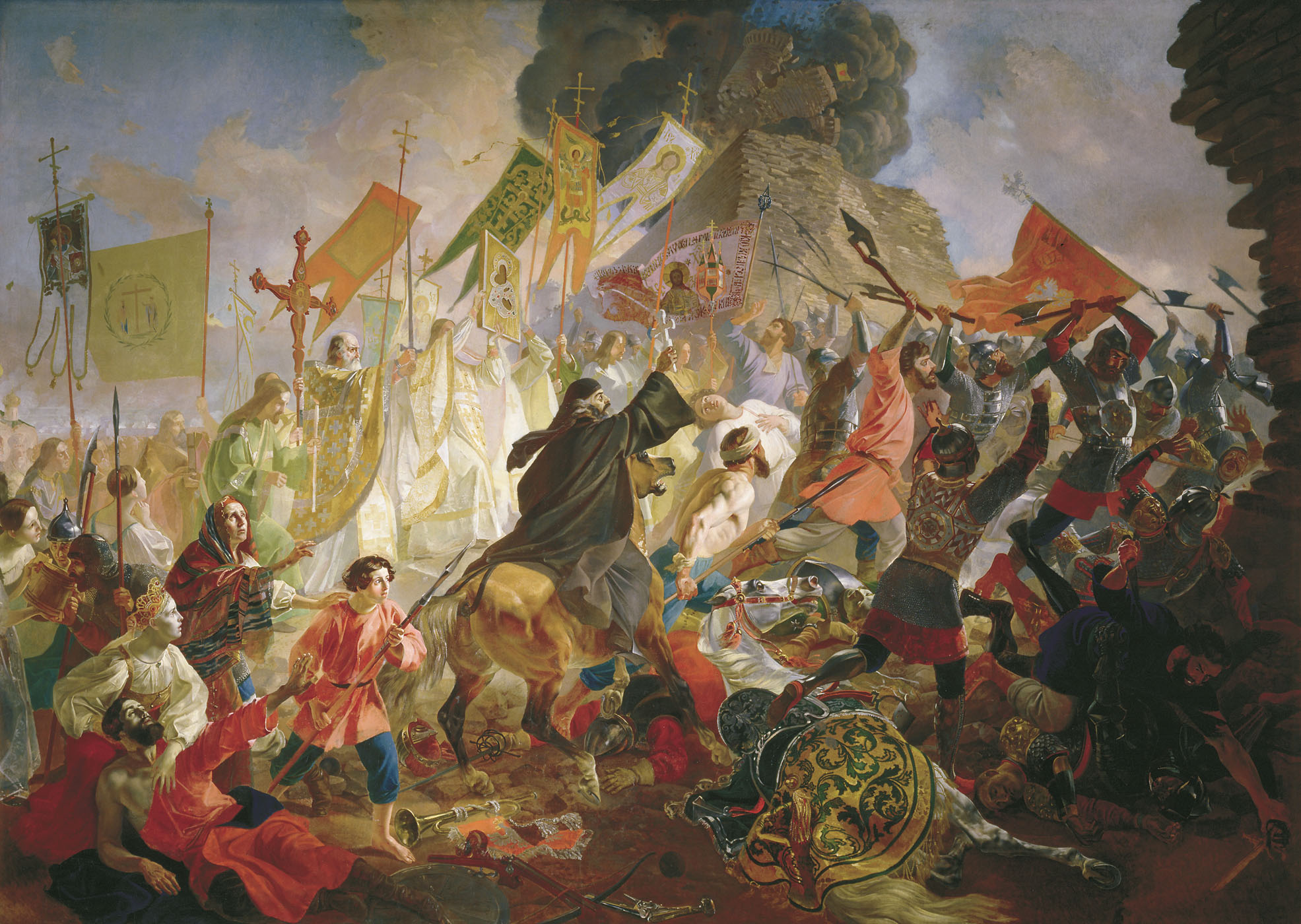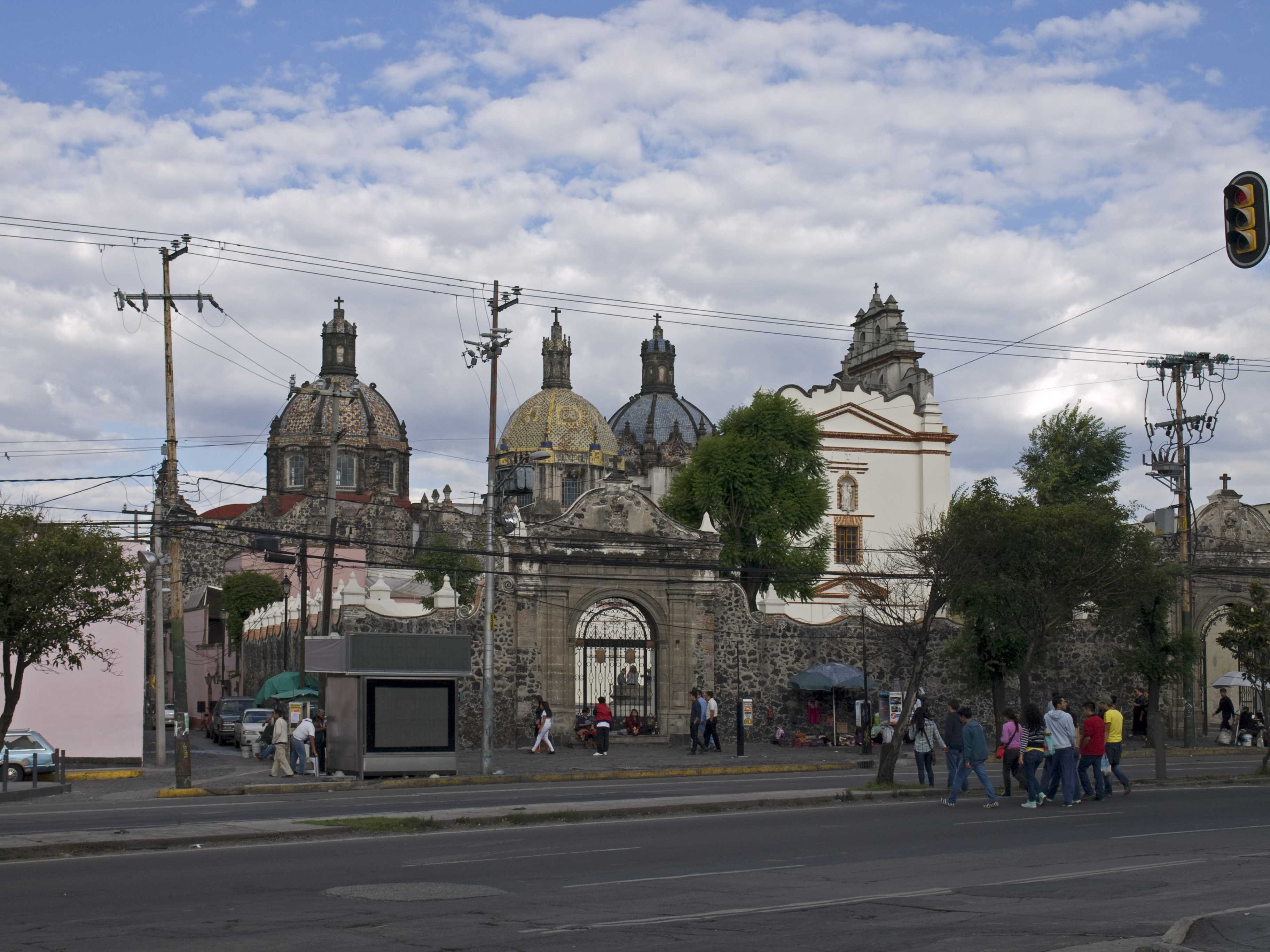|
Bell Gable
The bell gable ( es, espadaña, french: clocher-mur, it, campanile a vela) is an architectural element crowning the upper end of the wall of church buildings, usually in lieu of a church tower. It consists of a gable end in stone, with small hollow semi-circular arches where the church bells are placed. It is a characteristic example of the simplicity of Romanesque architecture. Overview The bell-gables or ''espadañas'' are a feature of Romanesque architecture in Spain. They replaced the bell tower beginning the 12th century due to the Cistercian reformation that called for a more simplified and less ostentatious churches, but also for economical and practical reasons as the Reconquista accelerated and wider territory needed to be re-christianized building more temples and ''espadañas'' were cheaper and simpler to build. Today, they are a common sighting in small village churches throughout Spain and Portugal. This simple and sober architectural element would later be brou ... [...More Info...] [...Related Items...] OR: [Wikipedia] [Google] [Baidu] |
Church San Blas De Illescas Of Coamo
The Iglesia San Blas de Illescas ( en, Church of Saint Blaise of Illescas) is a Catholic parish church located on the center plaza of Coamo, Puerto Rico. Construction on the church began in 1661; it has since been judged "one of the most important works of religious architecture in Puerto Rico". The church is separated from the open plaza below by a series of ceremonial steps and a delicate cast iron balustrade. The delicately curved Baroque facade reflects a major reconstruction completed in 1784. A two-level bell-gable with open arches and bells is prominently featured in the facade. The parish of San Blas of Coamo is one of the oldest on the island. with See also *List of the oldest buildings in Puerto Rico This article lists the oldest extant buildings in Puerto Rico, including extant buildings and structures constructed prior to and during the United States rule over Puerto Rico since Puerto Rico was annexed in 1898. Only buildings built prior to ... References ... [...More Info...] [...Related Items...] OR: [Wikipedia] [Google] [Baidu] |
Basco Cathedral
Basco Cathedral, canonically named as Our Lady of the Immaculate Conception Cathedral, and commonly known as Santo Domingo Church, is a Roman Catholic cathedral church located in Basco, Northern Batan Island, Batanes, Philippines. Because Batanes was named ''Provincia de la Concepcion'' in religious records at the time of its establishment, the first church was dedicated to Our Lady of the Immaculate Conception, Patroness of Batanes Prelature.Casas, Brigido, Fr.. Prelature of Batanes. Unpublished manuscript. It is speculated that the image of the Immaculate Conception was brought to Batanes during the 1783 expedition. As a parish church, it bears the name Santo Domingo Church, in honor of the patron saint of the capital of Batanes, which is Basco, while it was dedicated to the Immaculate Conception as a cathedral. History With the establishment of Basco town on June 26, 1783, came the evangelical mission headed by Dominican Fathers Bartholome Artiguez and Baltazar Calderon. ... [...More Info...] [...Related Items...] OR: [Wikipedia] [Google] [Baidu] |
Molango
Molango (officially Molango de Escamilla ) is a town and one of the 84 municipalities of Hidalgo, in central-eastern Mexico Mexico (Spanish language, Spanish: México), officially the United Mexican States, is a List of sovereign states, country in the southern portion of North America. It is borders of Mexico, bordered to the north by the United States; to the so .... The municipality covers an area of 246.7 km². As of 2005, the municipality had a total population of 10,385. Molango comes from the Word Molanco a nahuatl name that means place of the god mola a pre-Columbian deity that represents the surrounding mountains and was worshipped within the territory by Nahua and Otomi People's Who still live within this municipality to this day. The three languages spoken within molango are Spanish Nahuatl De La Huasteca Hidalguense and Otomí-Tepehua. The current mayor is Raul Lozano Cano. References Municipalities of Hidalgo (state) Populated places in Hidalgo (st ... [...More Info...] [...Related Items...] OR: [Wikipedia] [Google] [Baidu] |
Pskov
Pskov ( rus, Псков, a=pskov-ru.ogg, p=pskof; see also names in other languages) is a city in northwestern Russia and the administrative center of Pskov Oblast, located about east of the Estonian border, on the Velikaya River. Population: Pskov is one of the oldest cities in Russia. It served as the capital of the Pskov Republic and was a trading post of the Hanseatic League before it came under the control of the Grand Duchy of Moscow. History Early history Pskov is one of the oldest cities in Russia. The name of the city, originally Pleskov (historic Russian spelling , ''Plěskov''), may be loosely translated as "he townof purling waters". It was historically known in English as Plescow. Its earliest mention comes in 903, which records that Igor of Kiev married a local lady, Olga (later Saint Olga of Kiev). Pskovians sometimes take this year as the city's foundation date, and in 2003 a great jubilee took place to celebrate Pskov's 1,100th anniversary. The f ... [...More Info...] [...Related Items...] OR: [Wikipedia] [Google] [Baidu] |
Russia
Russia (, , ), or the Russian Federation, is a List of transcontinental countries, transcontinental country spanning Eastern Europe and North Asia, Northern Asia. It is the List of countries and dependencies by area, largest country in the world, with its internationally recognised territory covering , and encompassing one-eighth of Earth's inhabitable landmass. Russia extends across Time in Russia, eleven time zones and shares Borders of Russia, land boundaries with fourteen countries, more than List of countries and territories by land borders, any other country but China. It is the List of countries and dependencies by population, world's ninth-most populous country and List of European countries by population, Europe's most populous country, with a population of 146 million people. The country's capital and List of cities and towns in Russia by population, largest city is Moscow, the List of European cities by population within city limits, largest city entirely within E ... [...More Info...] [...Related Items...] OR: [Wikipedia] [Google] [Baidu] |
San Ángel
San Ángel is a Colonia (Mexico), colonia or neighborhood of Mexico City, located in the southwest in Álvaro Obregón, D.F., Álvaro Obregón borough. Historically, it was a rural community, called Tenanitla in the pre-Hispanic period. Its current name is derived from the El Carmen monastery school called San Ángel Mártir. San Ángel remained a rural community, centered on the monastery until the 19th and 20th centuries, when the monastery was closed and when the area joined urban sprawl of Mexico City. However, the area still contains many of its former historic buildings and El Carmen is one of the most visited museums in the city. It is also home to an annual flower fair called the Feria de las Flores, held since 1856. In 1934, San Ángel was declared as a ''Pueblo Típico Pintoresco'' (Picturesque Typical Town); in 1987, due to presidential order, it was declared historical monument zone. Geography San Ángel is located in the southwest of the Federal District of Mexico alo ... [...More Info...] [...Related Items...] OR: [Wikipedia] [Google] [Baidu] |
El Carmen Complex
El Carmen is a former convent converted to museum in San Ángel, a southern suburb of Mexico City. The convent was founded on 29 June 1615 by the Discalced Carmelites in the area of the Aztec village of Tenanitla, which was later renamed San Ángel. The founder was Father Andrés de San Miguel. This convent was built between 1615 and 1626. In the university, there was a college for theology students and a library, which contained more than 12,000 books. In 1858, the college was closed, and the complex was transferred to the local authorities. In 1929, the museum was created, and in 1939, it was transferred to the newly created Instituto Nacional de Antropología e Historia. The museum contains a large collection of Mexical colonial religious art including paintings of Miguel Cabrera, as well as original furniture of the monastery, and a collection related to the history of the monastery and relates the life of the Carmelites. See also *List of colonial churches in Mexico City ... [...More Info...] [...Related Items...] OR: [Wikipedia] [Google] [Baidu] |
Cebú
Cebu (; ceb, Sugbo), officially the Province of Cebu ( ceb, Lalawigan sa Sugbo; tl, Lalawigan ng Cebu; hil, Kapuroan sang Sugbo), is a province of the Philippines located in the Central Visayas region, and consists of a main island and 167 surrounding islands and islets. Its capital and largest city is Cebu City, nicknamed "the Queen City of the South", the oldest city and first capital of the Philippines, which is politically independent from the provincial government. The Cebu Metropolitan Area or Metro Cebu is the second largest metropolitan area in the Philippines (after Metro Manila) with Cebu City as the main center of commerce, trade, education and industry in the Visayas. Being one of the most developed provinces in the Philippines, in a decade it has transformed into a global hub for business processing services, tourism, shipping, furniture-making, and heavy industry. Mactan–Cebu International Airport, located on Mactan Island, is the second busiest airport in ... [...More Info...] [...Related Items...] OR: [Wikipedia] [Google] [Baidu] |
Fort San Pedro
Fort San Pedro ( es, Fuerte de San Pedro) is a military defense structure in Cebu, Philippines, built by the Spanish under the command of Miguel López de Legazpi, first governor of the Captaincy General of the Philippines. It is located in the area now called Plaza Independencia, in the pier area of the city. The original fort was made of wood and built after the arrival of Legazpi and his expedition. In the early 17th century a stone fort was built to repel Moro Pirates, Muslim raiders. Today's structure dates from 1738 and is the oldest triangular bastion fort in the country. It served as the nucleus of the first Spanish settlement in the Philippines. During the Philippine Revolution at the end of the 19th century, it was attacked and taken by Filipino revolutionaries, who used it as a fortification, stronghold. Background The fort is triangular in shape, with two sides facing the sea and the third side fronting the land. The two sides facing the sea were defended with art ... [...More Info...] [...Related Items...] OR: [Wikipedia] [Google] [Baidu] |
San Salvador, Hidalgo
San Salvador is a town and one of the 84 municipalities of Hidalgo, in central-eastern Mexico Mexico (Spanish: México), officially the United Mexican States, is a country in the southern portion of North America. It is bordered to the north by the United States; to the south and west by the Pacific Ocean; to the southeast by Guatema .... The municipality covers an area of 200.4 km². As of 2005, the municipality had a total population of 28,637. References Municipalities of Hidalgo (state) Populated places in Hidalgo (state) {{Hidalgo-geo-stub ... [...More Info...] [...Related Items...] OR: [Wikipedia] [Google] [Baidu] |
Ullastret
Ullastret is a small historic village on the Bay of Empordà located some 5 km northeast of La Bisbal d'Empordà, in Catalonia. Formerly a 3 km2 lake, known as ''Llac d'Ullastret'' or ''Estany d'Ullastret'' existed close to this town, but it was desiccated in the 19th century. It is home to ancient Iberian archaeological remains, and a medieval church known from the 9th century, dedicated to SS. Paul and Peter. Economy is based mostly on tourism and agriculture. Gallery File:Bronce ibero.jpg, Inscribed lead plate from the Ullastret Iberian archaeological site File:CisternaUllastret.JPG, Cistern at the Ullastret site File:Màscares de terracota de la ciutat ibèrica d'ullastret.jpg, Terracota masks File:Iberian town of Ullastret 03.jpg, Walls File:Enceinte-Ibère-Ullastret.jpg, Walls File:Ciudad Iberica de Ullastret (4).jpg, Building remains File:Columnes i sitges al recinte d'Ullastret.jpg, Building remains File:Ciutat ibèrica d’Ullastret. Puig de Sant Andreu - 3203 ... [...More Info...] [...Related Items...] OR: [Wikipedia] [Google] [Baidu] |



